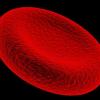ABID: Cold Agglutinin
-
Similar Content
-
- 7 replies
- 3,325 views
-
- 17 replies
- 2,784 views
-
How do facilities handle missed antibodies on automated testing platforms? What do you require before returning to using your automated method?
By DaMaam,
- Missed Antibodies
- automation
- (and 3 more)
- 7 replies
- 2,775 views
-
Antibody ID Policy/Process/Procedure
By goodchild,
- antibody identification
- document control
- (and 1 more)
- 9 replies
- 3,658 views
-
-
Recently Browsing 0 members
- No registered users viewing this page.


Recommended Posts
Create an account or sign in to comment
You need to be a member in order to leave a comment
Create an account
Sign up for a new account in our community. It's easy!
Register a new accountSign in
Already have an account? Sign in here.
Sign In Now